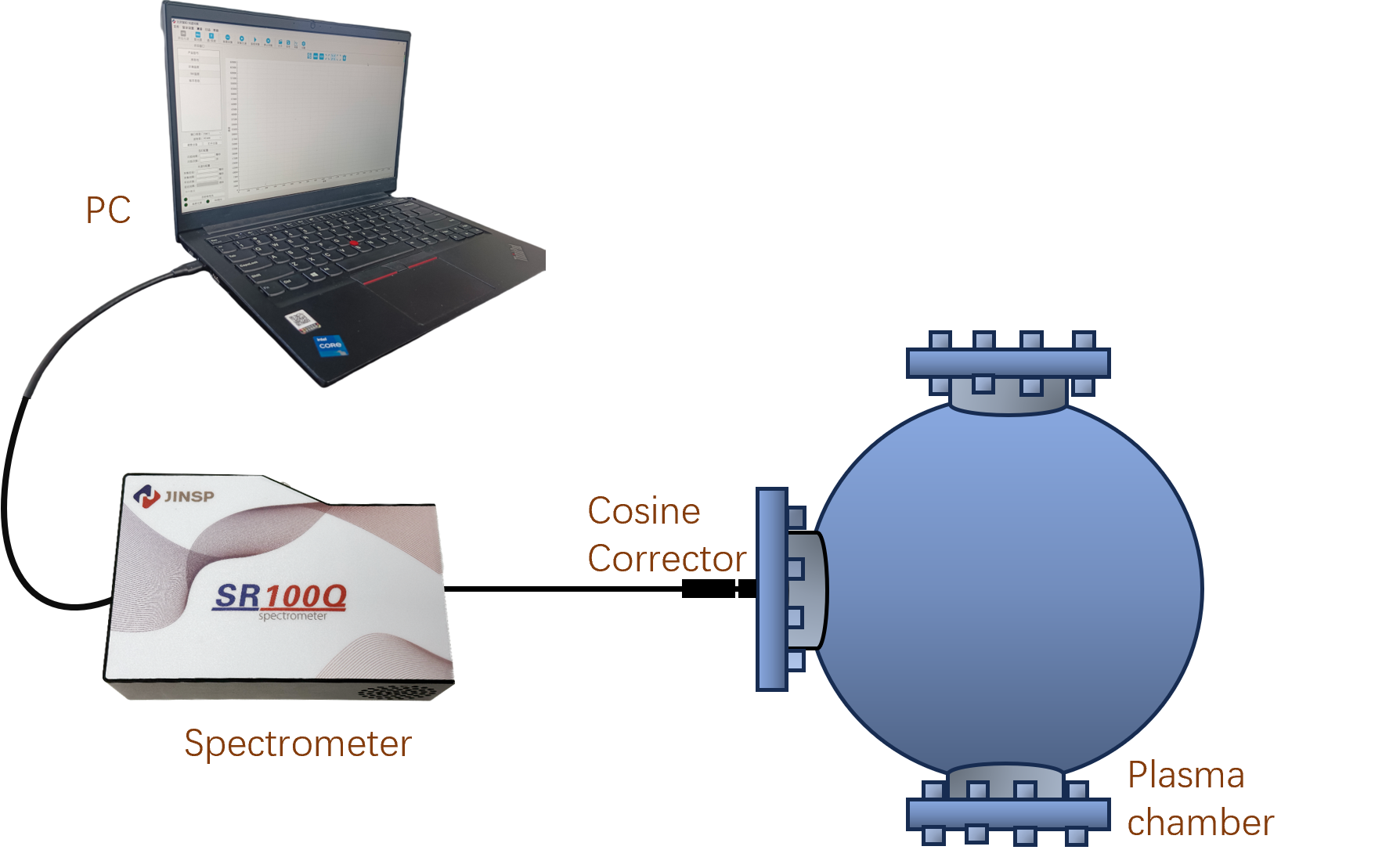Plasma is a state of matter composed of ionized gas, consisting of positive and negative ions formed after some electrons are stripped from atoms and molecules. It is known as the fourth state of matter. Plasma has high electrical conductivity and interacts strongly with electromagnetic fields. Plasma is widespread in the universe, manifesting in forms such as stars, lightning, and auroras.
Monitoring plasma with spectrometers involves using the spectrometer for real-time monitoring and analysis of plasma. This technique combines the high resolution and sensitivity of spectrometers with the unique properties of plasma. By exciting elements in the sample using high-temperature plasma, the elements transition to an excited state, and their emission spectra are collected and measured through an optical system.
1. Experimental Setup
1) Sample Chamber: The plasma chamber introduces the gas to be tested into the plasma chamber, allowing the introduction of various gases or particles to change parameters like plasma temperature and particle density to monitor the plasma.
2) Cosine Corrector: To account for differences in intensity and uneven measurement surfaces, a cosine corrector or collimator can be used.
3) UV-Resistant Fiber Optic: These fibers are resistant to aging and high temperatures, preventing damage in the plasma environment.
4) Detection Equipment: High-performance UV-visible fiber optic spectrometers can cover the emission or absorption spectra wavelength range for specific elements or molecules in the plasma.

System Diagram for Fiber Optic Spectrometer Measuring Plasma in the Gas Chamber
Initially, the sample is converted into a gas or dissolved in an appropriate medium and injected into the plasma generator. In the generator, the sample is coupled with energy from an electromagnetic field, forming high-temperature plasma. The electrons in the plasma excite the elements in the sample, transitioning them to an excited state. The spectrometer then analyzes the radiation emitted by the plasma. By comparing it with pre-established standard curves or reference samples, the elemental content and composition of the sample can be determined.
During the experiment, a fiber optic spectrometer can measure the emission spectra of argon plasma. By analyzing the spectral features, the components and concentration changes in the plasma can be identified. Combined with other monitoring data (such as temperature and pressure), the physical state and evolution of the plasma can be analyzed.
2. Applications of Plasma Monitoring
● Environmental Monitoring
Spectrometers for plasma monitoring can be used to determine the content of metal and non-metal elements in water, soil, and air. For example, detecting heavy metal ions (like lead, mercury, cadmium) and nutrients (like nitrogen, phosphorus) in water, as well as pesticide residues and harmful elements in soil.
● Food Safety
In the field of food safety, spectrometers for plasma monitoring can detect heavy metals and harmful elements (like lead, cadmium, mercury) and nutritional elements (like calcium, iron, zinc) in food.
● Material Science
In material science, spectrometers for plasma monitoring can be used for high-purity analysis and trace element analysis of metallic materials, semiconductor materials, and nanomaterials.
● Metallurgical Industry
In the metallurgical industry, spectrometers for plasma monitoring can be used for elemental analysis and quality control of metal materials during processes like ironmaking, steelmaking, and non-ferrous metal smelting.
3. Product Recommendation
The Jinsp SR100Q is a research-grade spectrometer designed specifically for weak signal detection. It features a research-grade cooled CCD array chip with a quantum efficiency of up to 92%, maintaining high response even in the ultraviolet range. This significantly improves the sensitivity and signal-to-noise ratio for weak signals, making it ideal for weak signal detection. Combined with advanced high-resolution optical design, it is stable and reliable in performance. For more details, please visit: Best SR100Q Ultra High Sensitivity Spectrometer manufacturers and suppliers | JINSP (jinsptech.com)
4. Product Advantages
● High Sensitivity: Capable of detecting very low concentrations of elements.
● High Resolution: Able to distinguish spectral lines of close wavelengths.
● Simultaneous Multi-element Analysis: Able to determine multiple elements simultaneously.
● Real-time Monitoring: Capable of real-time monitoring of plasma changes.
Post time: Jul-26-2024

